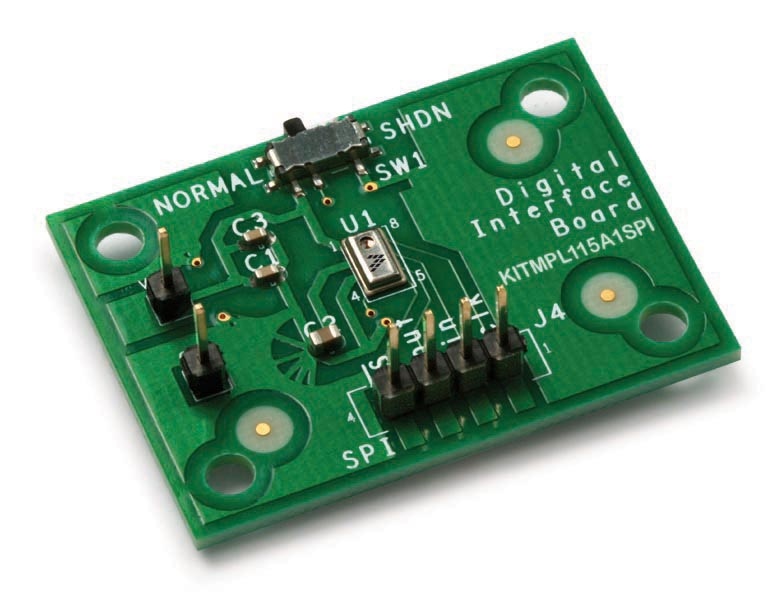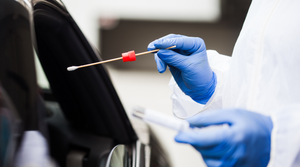Making Sense of Medical MEMS Technologies
MEMS-based motion, pressure, and flow sensors are providing advanced functionality to a multitude of medical applications
May 24, 2010

The underlying technology that prompts airbags to deploy on impact during a car crash can also alert medical professionals when a patient falls and makes contact with the ground. Although not new to the scene by any means, microelectromechanical systems (MEMS)-based sensing technologies are ultimately enabling the development of safer, smaller, sleeker, and--most of all--more-advanced products.
The Fourth Paradigm
By minimizing power consumption, enhancing precision, and allowing for more-intelligent devices, MEMS inertial sensing has moved to the forefront of medical device enabling technologies in recent years. "MEMS is really hot right now," observes Wayne Meyer, MEMS marketing and applications manager at Analog Devices Inc. (Norwood, MA). "People see things like the iPhone and the Wii, and it doesn't matter what industry you're in--people are trying to figure out how to get the functionality, user interface, and power-management capabilities of motion sensing into their product. It's ubiquitous advertising that everybody can relate to, and it has certainly funneled into the medical industry."
Inertial sensors are designed to measure the five motion senses: acceleration, shock, tilt, vibration, and rotation. And at the core of these intelligent MEMS motion sensing applications is an accelerometer. Measuring linear motion, this critical component senses acceleration, shock, tilt, and vibration; a gyroscope is designed to measure rotation, however. "Motion sensing has become the fourth paradigm," Meyer comments. "There was data, then there was audio, then there was video, and now it's like motion is becoming the next thing; we can make it so inherent, you don't even have to do anything."
As a case in point, Meyer raises the issue of fall detection. Elderly patients, for example, can suffer serious injury from an unobserved fall. With time often of the essence in such situations, a wearable, intelligent device equipped with MEMS inertial sensors could potentially save a life or minimize injury. By tracking acceleration changes in three orthogonal directions, a motion sensor could detect and assess the severity of a fall using an algorithm. Then, if deemed necessary, the sensor could prompt action within the device to activate GPS and signal for help, according to the company. Similarly, Meyer notes, motion sensors for use when performing CPR could provide feedback as to the amount of force exerted on the patient and whether compressions are accurate and effective.
In addition to providing a platform for these smart medical devices, MEMS motion sensors are characterized by low power consumption and a small package size to accommodate shrinking designs. Catering to these inertial sensing needs, Analog Devices offers the compact ADXL345 digital accelerometer. Accessible through either an SPI or I2C digital interface, the three-axis sensor features 4-mg/LSB resolution measurement at up to 16 g.
"The ADXL345 has the lowest power on the market--these things pull microamps, so they're not a huge draw like a processor," Meyer says. "We also have a first-in, first out (FIFO) buffer in there that allows you to store measurements without waking up the whole system and really keep system power low." Furthermore, the sensor can measure inclination changes less than one degree and is designed with activity and inactivity, tap, and free-fall sensing abilities. "All of these [features] really add up to being able to do it better and with less manual input," Meyer notes.
Pressure to Go With the Flow
Moving beyond motion sensors, MEMS has also influenced other key measurement technologies. In recent years, for instance, MEMS mass-flow sensors have emerged as a viable alternative to differential-pressure sensors in such medical applications as portable respiratory equipment. Featuring an inverted output curve shape, these flow sensors can better meet industry demand for higher measurement resolution--especially at the zero-cross-point range--compared with conventional pressure sensors, according to Donna Sandfox, product manager at Omron Electronic Components LLC (Schaumburg, IL).
"A differential-pressure sensor curve flattens out at the zero-cross-point [range], making it difficult to distinguish very low flows from no flow or slightly negative flow," she explains. "The output of a MEMS mass-flow [sensor] is at its steepest slope, or highest resolution, as it approaches zero, making it an attractive option for measuring a wide flow range where low-flow accuracy is of particular importance."
Swapping sensors in a design is a relatively simple task, since both sensor types are set up in a bypass configuration. But to successfully make the switch, Sandfox cautions, OEMs need to keep in mind that the flow in mass-flow sensing differs from that in differential-pressure sensing. The former has a dynamic flow, which means that air passes continually through the sensor; the latter is a static system.
|
Omron's manifold-mount MEMS mass-flow sensor can replace a differential-pressure sensor in portable respiratory equipment. |
"When designing a mass-flow sensor bypass setup for a tube- or pipe-based system, the spacing of the bypass ports and orifice size should be designed to provide the optimum resolution for the maximum flow rate through the main flow path," Sandfox says. She also stresses the importance of controlling the length of the bypass tubes during manufacture.
Suited for such applications, Omron's D6F-P0010AM2 manifold-mount flow sensor can measure more than 200 lpm with a bypass setup, while eliminating the need for internal tubing in medical products with space constraints. Designed to measure flow velocity and mass-flow-rate movement, the sensor is also engineered with the company's sensitive MEMS mass-flow chip and dust-segregation system. It can be used in a variety of portable medical products, in addition to replacing differential pressure sensors in respiratory equipment.
A Barometer of the Technology
For respiratory equipment, MEMS is also providing a breath of fresh air in the form of a digital barometer. Manufactured by Freescale Semiconductor (Tempe, AZ), the MPL115A is designed to assist in oxygen regulation in ventilators. A compact form factor measuring 5 × 3 × 1.2 mm saves space in portable devices with limited internal real estate.
Combining a MEMS pressure sensor with a conditioning IC, the barometer provides pressure measurement ranging from 50 to 115 kPa with an accuracy of 1 kPa. To do so, however, the product consumes minimal power. "With this advanced technology, we've been able to harness operation at about 5 µA at current draw, so that's a huge energy savings. A competing product would be in the 1 to 5 mA range," says Raul Figueroa, product marketer for pressure sensors at Freescale. "[The barometer offers] more energy conservation, especially when you're looking at portable systems; it prolongs battery operation." The barometer only consumes 1 µA during sleep or shutdown mode.
Additional advantages of the technology include the digital design, which eliminates the need for an analog-to-digital convertor, and an integrated temperature sensor. The incorporation of temperature sensing into the MEMS technology allows for real-time compensation over temperature.
This design strategy of pairing different sensing technologies to enhance functionality is likely a MEMS bellwether, Figueroa muses. He also speculates that future MEMS sensors for use in the medical device industry will need to be able to perform diagnostics. "The market is demanding that the sensor be able to test itself for compliance and functionality. I think we're getting past the point where a device goes to a gross failure versus alerting the user that there is some degradation to performance that needs to be serviced," Figueroa states. "I also see more intelligence necessary for future MEMS technology. All of that is pointing to the future."
About the Author(s)
You May Also Like



